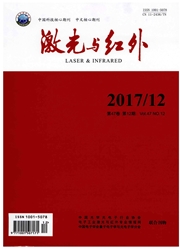

 中文摘要:
中文摘要:
当复合材料处于低环地轨道的空间环境中时,将经受环境温度剧烈变化的影响。因此,要顺利完成既定任务,就要在温度变化的过程中保持结构尺寸的稳定性。热膨胀系数(CTE)可以很好地反映结构尺寸的稳定性,在执行任务的过程中须实时监测其变化情况。实验中,由两个光纤Bragg光栅(FBG)构成的差动式结构被用作传感头来同时测量温度和热应变,从而获得CTE的变化。在热真空腔中模拟包括高真空度、紫外和温度周期性变化的低环地轨道环境,在温度周期性变化的过程中,材料发生老化,实时监测横向CTE的变化,可以发现,在1000个温度变化周期中,CTE没有突变,整个测试过程中,CTE略有变小。从实验结果中,可以得出,FBG传感器可成功埋入合成物结构中实现温度和应变的同时测量,从而实现在飞行物长期执行任务的过程中的健康状况监测。
 英文摘要:
英文摘要:
When composite structures are exposed to the space environments such as low earth orbit, they are known to undergo considerable temperature change. Therefore, for the successful completion of their missions, it is important for the structures to maintain the consistent dimensional stability in such a thermal cycling condition. The coefficient of thermal expansion (CTE) of the structures is suitable to express the dimensional stability and it is needed to be monitored throughout the mission. In the experiment, two fiber Bragg grating (FBG) sensors have been adopted for the simultaneous measurement of thermal strain and temperature to get the CTE change. LEO conditions with high vacuum, ultraviolet and thermal cycling environments were simulated in a thermal vacuum chamber. The change of the transverse CTE in a composite laminate exposed to the space environment was measured for intervals of aging cycles in real time. As a whole,there was no abrupt change of the CTE after 1000 aging cycles. After aging,however,the CTE decreased a little all over the test temperature range. From the experimental results, it was shown that FBG sensors can be successfully embedded into the composite structures to monitor strain and temperature simultaneously, which can check the health status of spacecrafts under low earth orbit over long-term mission time.
 同期刊论文项目
同期刊论文项目
 同项目期刊论文
同项目期刊论文
 期刊信息
期刊信息
